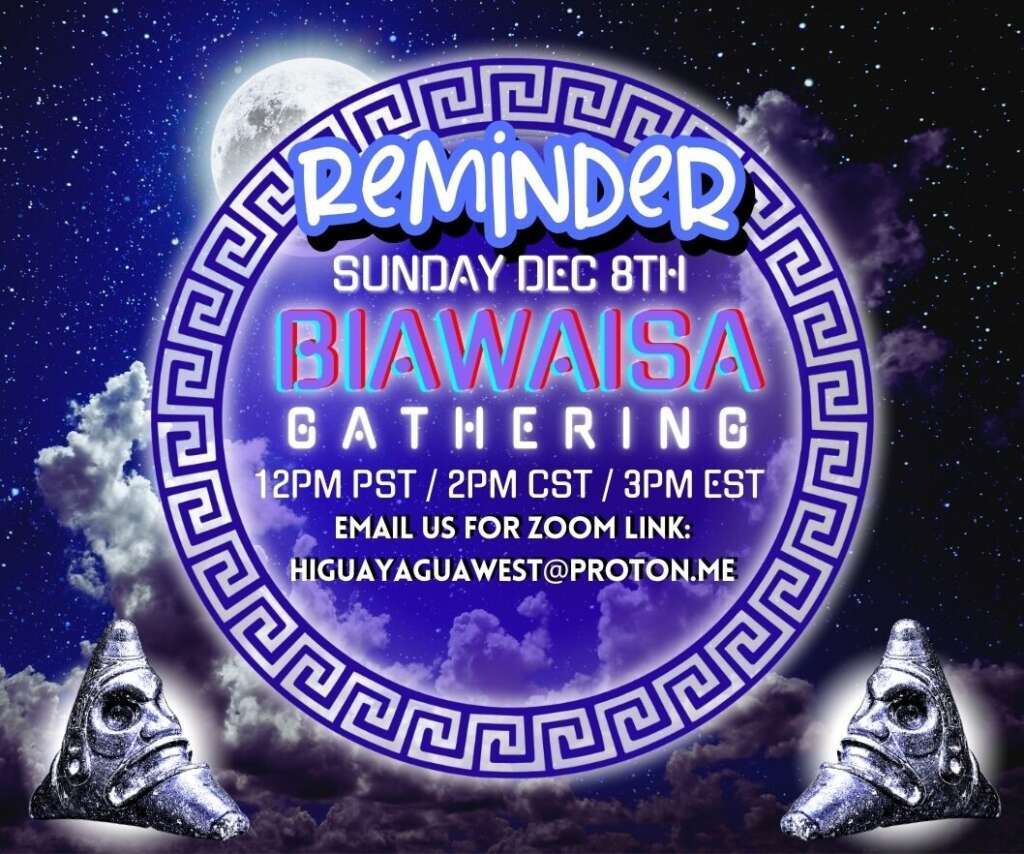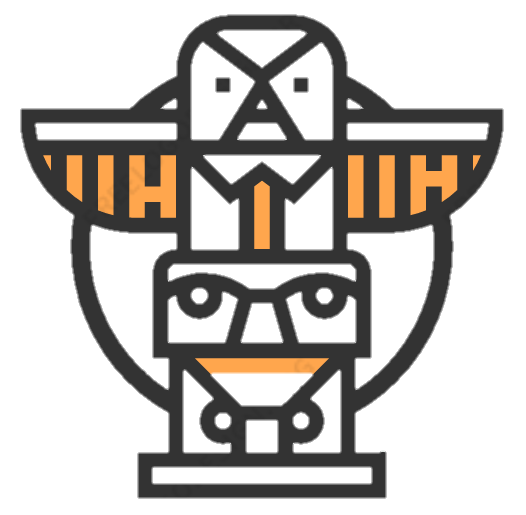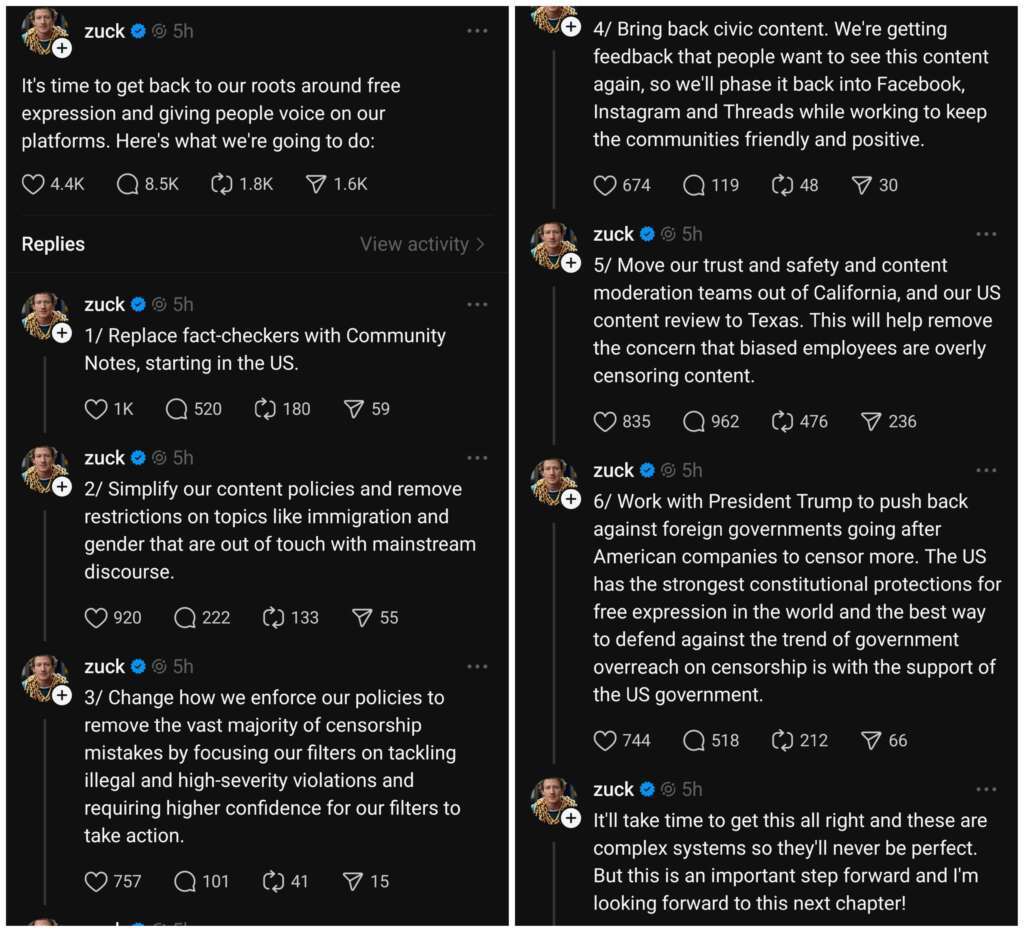The Origin of Hiwatahia
The Taino movement began sometime in the late 1980s. Individuals, primarily Puerto Ricans, Dominicans, and Cubans, met at Native American powwows to connect with an obvious, yet denied, Indigeneity. “The Taino are extinct; they are your precursors, not your ancestors,” was repeated by historians ad nauseum.
Those claiming Taino descent, however, continued asserting this forbidden Taino identity. As the 1990s rolled in, more people joined the movement, despite academia vehemently denying any possibility of Caribbean Indigeneity.
People from all walks of life, from gang bangers to nurses and doctors, police officers, and firefighters, began to question this “extinction” story. That which awakened in the late 1980s, became stronger in the 1990s. Individuals began researching every aspect of Taino culture. One Taino, Dr. Jose Barreiro from Cuba, coined the term, “Eight Markers of Indigeneity,” which served as a guide for the rest of us to follow. These markers include:
-
Oral traditions
-
Customs
-
Material culture
-
Spirituality
-
Agricultural practices
-
Identity
-
Genetics
-
Language
This guide made it easy to focus on different aspects of our ancestral culture. Many of us, such as Kasike Jorge Baracutay Estevez, began making lists of surviving Indigenous words still present in Caribbean Spanish.
The 2000s saw such a boom in the Taino resurgence movement that it became evident it was here to stay. DNA sequencing studies made their appearance in 2002, making matters worse for our detractors and, ultimately, proving that the Indigenous blood found in the Caribbean was indeed Taino. It was a truth our rural people had long assured.
A few groups and individuals did phenomenal work on reconstructing the language. But in time, they realized that recorded Taino lexicons, primarily nouns, made it quite impossible to revive the classic language.
Modern Taino people are relentless and not easily deterred. The following is the story of how Hiwatahi Hekexi Taino Language came about–
The Classic Taino language, spoken by our Indigenous ancestors, was the lingua franca of the entire group of larger islands of the Caribbean. In recent years, geneticists found that all Indigenous Caribbean peoples are descendants of Arawak-speaking peoples from South America, who traveled north in various migrations. They evolved into distinct groups such as Guanahatibey, Ciboney, Macorix, Ciguayo, Kalinago, and the Classic Taino. Although genetically closely related, these people spoke different languages and communicated using Classic Taino, the most dominant Caribbean language.
Columbus wrote that in some regions, the people spoke softly and melodic, while in other regions, spoken words sounded harsh, guttural, and unpleasant to the ears. The Spanish chroniclers were not linguists; most reports, narrated by conquistadors and others, reveal that many of these chroniclers were poorly educated.
The Spaniards recorded toponyms, flora and fauna unknown to them, and the names of influential individuals. However, these Spaniards had no way of knowing the following, undeniable facts about the Arawak language:
-
The Taino Arawak languages were polysynthetic. The Spanish recorded what they heard, barely understanding what the words meant. They often translated word for word. Synthetic languages usually truncate several words into what sounds like a single long word. Curiously, in modern Caribbean “street” Spanish, we also truncate words. For example, “queloquemanin, tato” is really, “Como estas hermano, esta todo bien?”
-
Spanish orthography did not become standardized until 1650. Thus, a person from Andalusia might spell a word in one way, while someone from Galicia or Catalan might spell the same word a different way, etc. Spaniards from different regions, Italians, French, and English, recorded Taino words how they sounded; so pinpointing root words in recorded Taino is brutal.
Since 1988, Kasike Jorge Baracutay Estevez began identifying and recording Caribbean words of possible indigenous origin. Cuban, Dominican, and Puerto Rican Spanish, and Haitian Creole contain many terms of possible Indigenous origins. By comparing and contrasting these words through an Arawakan lens, Kasike Baracutay was able to identify hundreds of morphemes.
Yet most of the words Kasike Baracutay and others, doing similar work, identified were mostly nouns. Thus, in time, it became evident that language revival was not possible. However, this realization led to another… language reconstruction would be possible!
What is Language Reconstruction?
Although there are countless books written on the Taino language, none are comprehensive dictionaries, instead they are collections of Taino words. You might ask why. Perhaps it is because to date, not a single linguist has ever done an in-depth exclusive investigation of the Taino language.
Most linguists today rely on observations made by the linguist, Douglas Taylor. He specialized in “Island Carib,” or the more accurate term, Kalinago. According to Taylor, Taino has more cognates with Lokono than any other Arawak language. The island natives of the Bahamas called themselves Lucayo; this shows just how closely Lokono, Taino, and Lukayo were.
Taino is a Ta-maipurean Arawak language, just as Lokono, Wayu, and others are. Arawak and Arawakan language groups are a vast linguistic family. The best option for the reconstruction of Taino was to borrow missing morphemes from these closely related sister languages.
Kasike Baracutay, who already had an extensive collection of Arawak Language books, was inspired by a chapter in Languages of the Amazon, by famed linguist Alexandra Aikhenvald. Chapter 1.5.1, “One group many ancestors,” pointed to identities born from multiple ethnic groups. Imagine living in a village with three or even five distinct ethnic groups, each with a different language. Naturally, people in this village would intermarry; the offspring of such unions would speak bits and pieces of the languages around them. As these children grew into adults and married within this village, their children would speak a new language, distinct from their parents’ languages. This evolution of the village language is what the chapter refers to as “Nested Identities.”
This practice of tribes joining and creating new tribes with new languages is not novel or unique. It explains the multitude of Native American languages spoken in South America. It also gives a glimpse of what probably occurred over the 7,000 years of American Indian migrations from South America into the Caribbean.
Dr. Aikhenvald and Kasike Baracutay became fast friends. Kasike Baracutay credits Dr. Aikhenvald for giving him the courage to seek words from “the vast Arawakan language family.” She also introduced him to Konrad Rybka, another superb linguist. Dr. Rybka challenged Kasike Baracutay’s knowledge, based on historical assumptions. For example, Dr. Rybka asked, “Jorge, what word do modern Taino use for fire?” Kasike Baracutay replied confidently, “watu,” to which Dr. Rybka challenged, “you got that word from the Spanish chronicles? Because they never recorded the word for fire! “Guatu” or “watu” is indeed fire, but in Cariban languages, not Arawak!” That was a significant teaching moment for Kasike Baracutay, who was amazed at Dr. Rybka’s ability to look at a word and understand its etymology.
Kasike Baracutay explains” I imagined myself living in a village where Lokono, Wayu, Wapishana, Tariana, Baniwa, and Garifuna peoples are all living in harmony, all Arawak and Arawakan peoples. There are no linguists to explain what is correct and what is incorrect. There is no talk of nouns, verb tenses, or proper grammar; there are only people speaking and learning to speak. The result of this is Hiwatahia. As Dr. Rybka indicated, had there not been a Spanish invasion of the Caribbean, these languages would have eventually spread all throughout the Caribbean. All languages that survive, evolve. Thus, Hiwatahia Hekexi Taino is part of the continuing Arawak Language “soup,” the mixing and blending and changing language soup that was already cooking in the Antilles when the colonizers arrived.
It took about three years, putting in 10+ hour days, for Kasike Baracutay to amass some 25,000 words. In the process, he created affixes to modernize the language, while still keeping any and all the ancient (classic) words unchanged. Although some language rules were adopted from Lokono and others in the Arawakan language family, Kasike Baracutay felt that the language needed its own Caribbean flavor. For this task he sought the help of his long-time friend, sister and fellow educator, Jessie Hurani Marrero. To say Jessie Hurani is meticulous is an understatement. Together, she and Kasike Baracutay relentlessly continued constructing and evolving Hiwatahia.
Small steps, long road
1) We combined words from the Lokono, Wayu, Tariana, Baniwa, Wapishana, and Garifuna languages. Lokono became the “Latin,” or mother language, as Classic Taino was closely related to Lokono.
2) We used a single orthography for all borrowed words for example the word “that” in Wayu is “tura,” in Lokono is “tora,” and in Hiwatahia is “tosa.”
3) We created affixes to denote past tense, to pluralize and to express present participles, etc. Some examples are the suffixes, “-no” used as a pluralizer, “-aki” used to indicate past tense, or”-ni” used to express a continuous action. We created 37 affixes to enhance Hiwatahia. Although many were inspired by English, English was merely one of many loose guides. We hoped to introduce modern concepts, as tools to help breathe life into Hiwatahia. As our People start to learn and speak our language, it will continue to grow and change, it will become a living language. This is the goal.
4) We realize that Arawak is affix-driven language, and many words are onomatopoeic (imitative). For example, a Caribbean bird kerebere, has a name that, when a suffix is added, mimics the sound that bird makes. If you add the pluralizing suffix, “-no,” you get “kerebere’no,” which is the bird’s call.
5) Most important, Higuayagua feels that our language is FAR from complete. If people continue to use and evolve with it, eventually speaking it fluently, then, and only then, can we say we have honored our Ancestors.
© 2022 Higuayagua Taino






